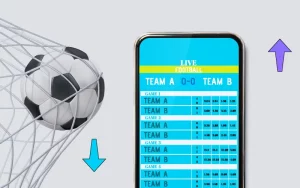
With the rise of the digital age today, where attention spans continue to shrink, the importance of visual storytelling in advertising has become very important. Of course, brands are incessantly looking for ways to involve their audience with their brand, and nothing does that much better than a well-created visual narrative.
While classic advertising sticks to pure commodity descriptions, visual storytelling evokes emotions, creates experiences, and forms brand loyalty. In the following article, we will discuss the role of visual storytelling in advertising and find out how companies can use this powerful tool to enhance their marketing approach.
The Psychology Behind Visual Storytelling
Humans are hardwired to respond to stories. Since ancient times, we have used storytelling as an avenue to share information, create connections, and influence people. Visual storytelling through advertisements touches upon this very inclination of human beings where the images, motion pictures, and design components speak to narrate something. It is researched that visuals are processed by people 60,000 times faster than text. This automatically makes visuals the most effective modality for commanding attention and conveying a message.
Besides, it includes more senses, meaning that people are most likely to remember the brand. A striking image has more and better effect if complemented with a strong narrative-the atmosphere which the viewer will experience is going to be more engaging. For businesses looking to amplify their advertising, it simply means that incorporating visual storytelling into their campaigns could equate to an immense rise in engagement and brand recall.
Visual Storytelling: How It Strengthens a Brand’s Identity
By far, one of the important reasons why visual storytelling is so effective in advertising is because it reinforces brand identity. A brand is not just a logo or a particular product-it’s personality, experience, and emotion amongst people. Through visual storytelling, brands can express values, missions, and unique selling propositions in ways that really resonate with target audiences.
A brand, for instance, that wants to be perceived as sustainable may tell a story in images how its product is. These can be accompanied by real-life stories of customers who have benefited from the use of the product in their lives. This way, one does not only present the values of the brand but also creates an emotional bond and trusting with the audience.
When a business goes to increase their visual storytelling they often gel the both off-line and on-line strategy together. The creation of visually-stunning print materials that complement the branding message is a big part of this. Through the aid of services to print flyer online, consistent uniquely designed flyers answer brand identity by sharing unitedly in a story across all mediums.
Creating Emotional Connections
Its prowess roots in the very effect on emotions. They stir up an emotional connection between the brand and the consumer, if well done. Emotions appeal more than logic, since most purchase decisions are done because of emotional drives rather than the dictates of reason. Therefore, when a brand has used visual storytelling to evoke joy, nostalgia, or even inspiration, consumers will be more apt to remember and engage with their products.
An effective visual story engages the consumer in a tale that is quite personal. That is why most advertisements have testimonials, personal stories, or scenarios that appeal to particular emotions. A travel company might utilize images of a family having fun on their travels to express the emotional benefits of spending quality time with loved ones. This touches emotions and creates thinking in the target consumer about experiences with the brand.
Read Also: Super Eagles maintain 39th position in latest FIFA ranking
Boosting Engagement with Interactive Content
With the relentless evolution that has been going on in visual storytelling, interactive content has outshone everything ever known in advertising. It’s no more passive viewing; it means active participation in the story of a brand. This could be done in the form of interactive infographics, videos, or even virtual reality experiences.
Interactive content lets consumers dive deeper into your brand’s story at a pace chosen by them, hence more personal. One such example for active visual storytelling was Nike’s “Nike By You” campaign. For the very first time in history, people were allowed to design their own shoes online. By giving consumers the power to create products themselves, Nike harnessed the personalization trend and uplifted consumer engagement.
This kind of narrative is not one-way, where the brand does the talking to its audience; rather, it lets your audience be part of the conversation. Resulting in an outcome, of course, of deeper connections to the brand, and more likely to convert.
Strengthen Your Social Media Strategy
These days, social media is the best playground for visual storytelling. Instagram, Facebook, and TikTok are visually created platforms; therefore, they could be perfect channels for brands to tell their stories. Above all, short videos are becoming super popular, since they enable brands to convey their message in an easily digestible and entertaining format.
For example, Instagram Stories can provide a behind-the-scenes look at a company, show customer testimonials, or build mini-narratives reflective of the overall brand identity. As many of these social media sites can attest, engaging visuals are more viral in nature, thus providing increased visibility and interaction.
Brands that employ the usage of social media for visual storytelling will also be able to make use of user-generated content. Other ways of community building and brand loyalty involve asking consumers to share stories and experiences about the brand. Many brands execute campaigns where they ask customers to upload photographs or videos of them related to the product, which are further shared on their social media platforms. This enhances the brand reach as well as strengthens their bonding with customers.
Conclusion
But all said and done, visual storytelling is one of the most important tools in modern advertising. It has the ability to connect a brand with its audience at a much deeper level on an emotional plane and also create memorable experiences that last. This, in turn, helps businesses reinforce their brand identity, connect emotionally with their audience, and eventually drive improved engagement across touchpoints. Be it through interactive content, social media, or even visual offline strategies in the form of printouts, storytelling with visuals remains one of the mighty ways to drive a brand’s message across in this ever-growing visual world.
Got what it Takes?
Predict and Win Millions Now
Visuele verhalen spelen een cruciale rol in reclame en marketing. In een wereld waar consumenten dagelijks worden overspoeld met informatie en advertenties, is het belangrijk om op te vallen en de aandacht van het publiek te trekken. Visuele verhalen bieden een effectieve manier om dit te doen, omdat ze emoties kunnen oproepen, een connectie kunnen maken met het publiek en een blijvende indruk kunnen achterlaten.
Een van de belangrijkste redenen waarom visuele verhalen zo effectief zijn in reclame, is omdat mensen van nature visueel ingesteld zijn. Ons brein verwerkt visuele informatie veel sneller dan tekst, waardoor beelden en video’s een krachtigere manier zijn om boodschappen over te brengen. Daarnaast hebben visuele verhalen het vermogen om emoties op te roepen en een diepere connectie te maken met het publiek. Door gebruik te maken van kleuren, beelden en storytelling kunnen merken een emotionele band creëren met consumenten, waardoor ze zich meer betrokken voelen bij het merk en eerder geneigd zijn om tot aankoop over te gaan.
Een ander voordeel van visuele verhalen in reclame is dat ze gemakkelijk kunnen worden gedeeld en verspreid op sociale media. Mensen delen graag visuele content met hun vrienden en volgers, waardoor merken een groter bereik kunnen genereren en hun naamsbekendheid kunnen vergroten. Door creatieve en boeiende visuele verhalen te creëren, kunnen merken de aandacht trekken van een breder publiek en hun boodschap effectief verspreiden.
Tot slot kunnen visuele verhalen ook helpen om de geloofwaardigheid en betrouwbaarheid van een merk te versterken. Door gebruik te maken van hoogwaardige beelden en video’s, kunnen merken een professionele uitstraling creëren en het vertrouwen van consumenten winnen. Consumenten associëren visuele kwaliteit vaak met de kwaliteit van het product of de dienst, waardoor het belangrijk is voor merken om te investeren in visuele storytelling om een positieve indruk achter te laten.
Kortom, visuele verhalen spelen een essentiële rol in reclame en marketing. Door gebruik te maken van beelden, video’s en storytelling kunnen merken de aandacht van het publiek trekken, emoties oproepen, een connectie maken met consumenten en hun boodschap effectief overbrengen. Het is daarom van groot belang voor merken om visuele storytelling op te nemen in hun marketingstrategieën om succesvol te zijn in een competitieve markt.

